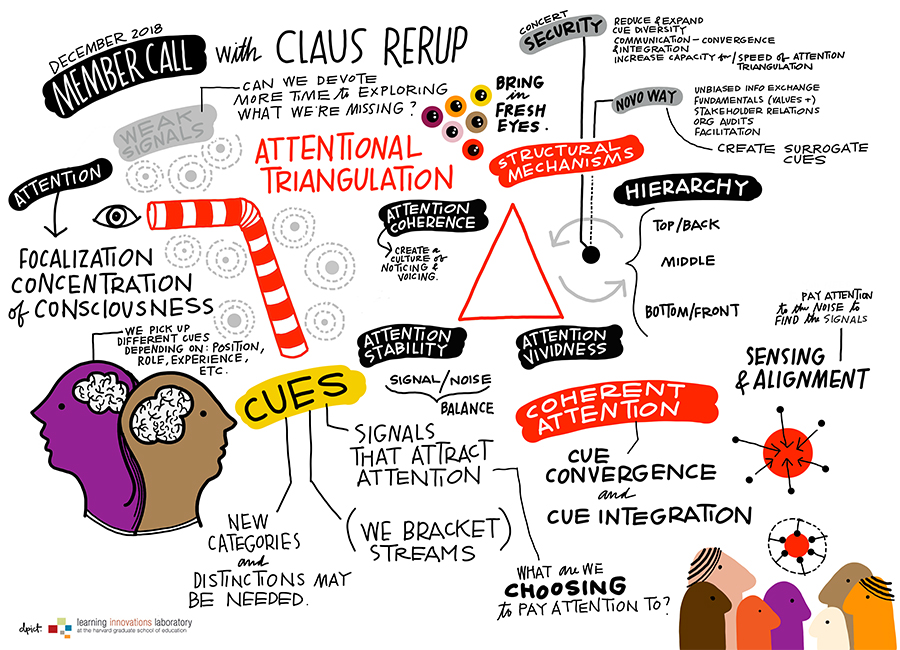During the December 2018 LILA member call, Professor Claus Rerup provided some insights into these questions. His research focuses on what he identifies as attentional triangulation – how a group of people (e.g., teams and organizations) avoid missing cues about threat or opportunity. Paying attention to the right kinds of cues is likely a mechanism toward achieving this year’s theme of collective mindfulness. When teams and organizations do not act in collectively mindful ways and are on autopilot, it is likely at least in part through lack of attentional triangulation.
But what type of attention is the right one and which cues to pay attention to is often a challenge even if we know that is vital. We know from past examples that there can be severe consequences to missing important cues. (think Challenge Disaster for one). Compounding the attentional challenge is the fact that often, we don’t know what we don’t know. Interestingly, especially in organizations, it is almost always the case that there is at least one person who knows that something is going wrong (or had picked up weak cues signaling it). So, if at least one individual perceived the cue, a question we might ask is whether we have the right processes in place to “hear” these insights so we can turn the collective attention to it at the right time?

What are the components of Attentional Triangulation?
Attentional triangulation provides a scaffold to understand what needs to be in place to create the conditions that minimize the likelihood of missing important yet weak cues. There are three components to attentional triangulation:
- Attentional Stability: sustained attention (e.g. when you are mesmerized by one particular painting at a museum).
- Attentional Vividness: the complexity of representation of issues (e.g. seeing different paintings in the museum exhibit).
- Attentional Coherence: how compatible the attention to issues is across levels, units, and people (e.g. how we would debrief each other after the painting exhibit to see what the whole thing is about, since we all saw different sets of paintings). Note that coherence is not suggesting that attention and signals across all levels, units, and people need to be similar; but rather that there needs to be a process where people are able to share dissimilar cues and discuss them. The key is to have a conversation about whether a cue is something we should pay attention to or not.
What can organizations put into place in order to develop attentional triangulation and foster collective mindfulness?
Organizations can put processes and mechanisms in place to increase optimal attentional triangulation and foster collective mindfulness (meta-mindfulness is required to realize that you need this). Steps also can be taken when there’s lot of environmental “chaos/noise” that help groups attend to an “inferno of cues”.

Add a comment